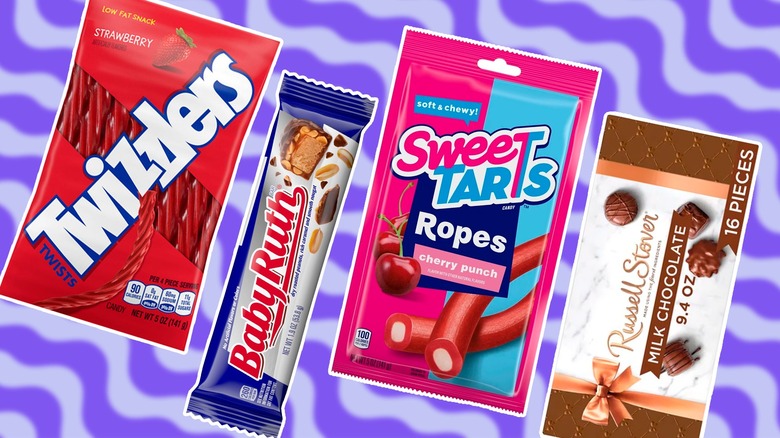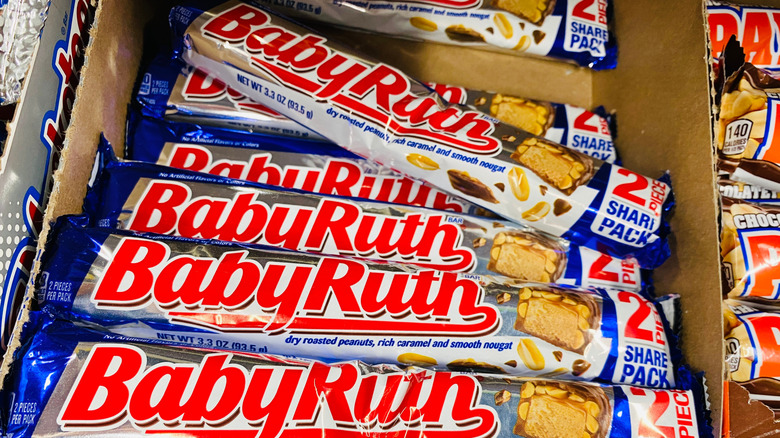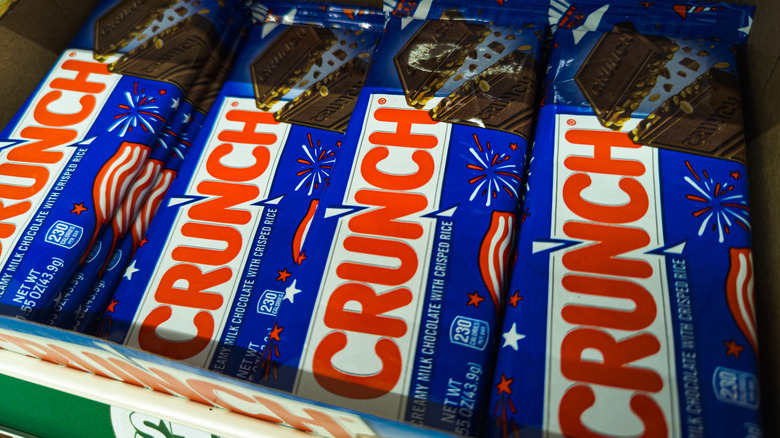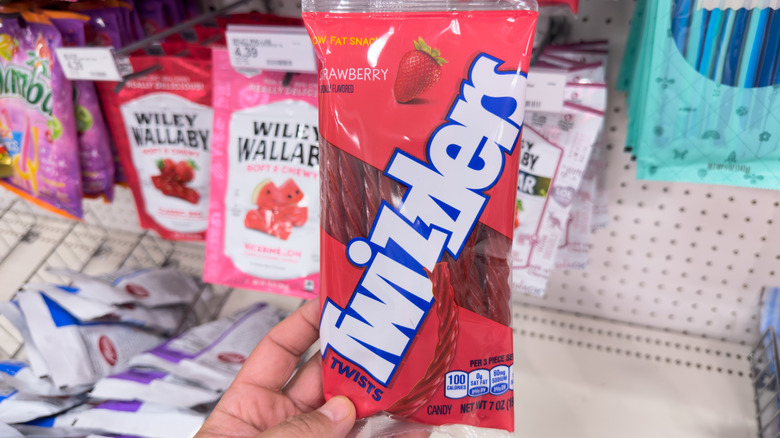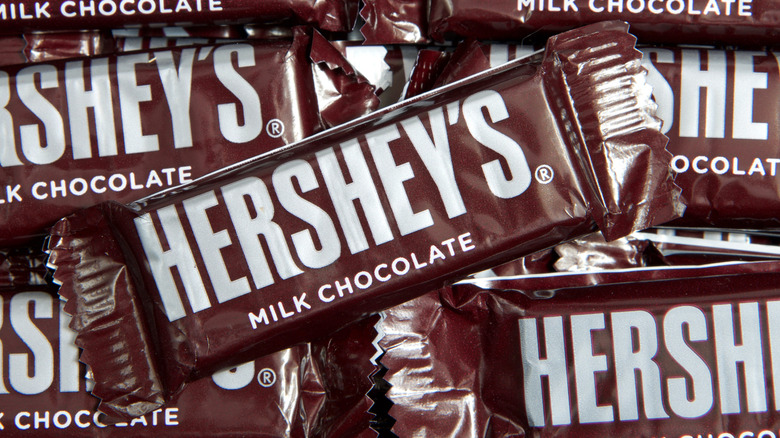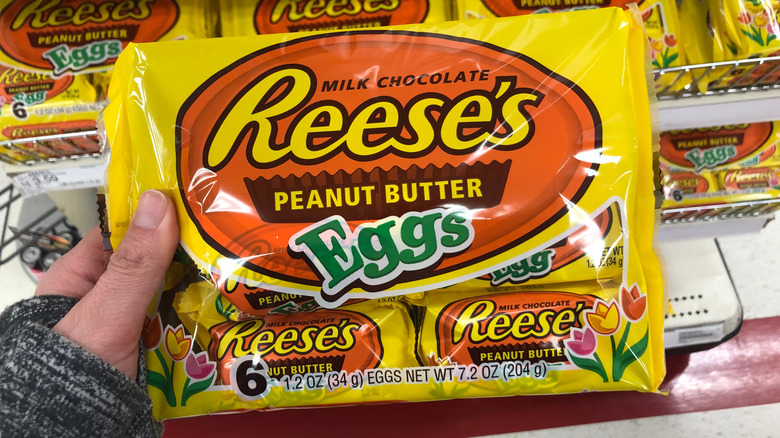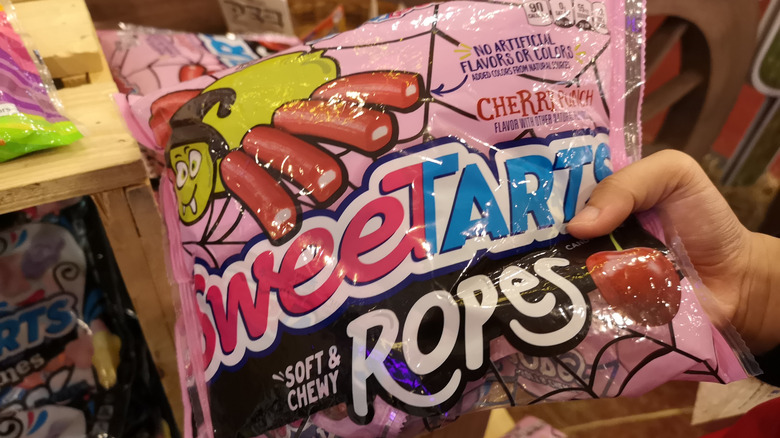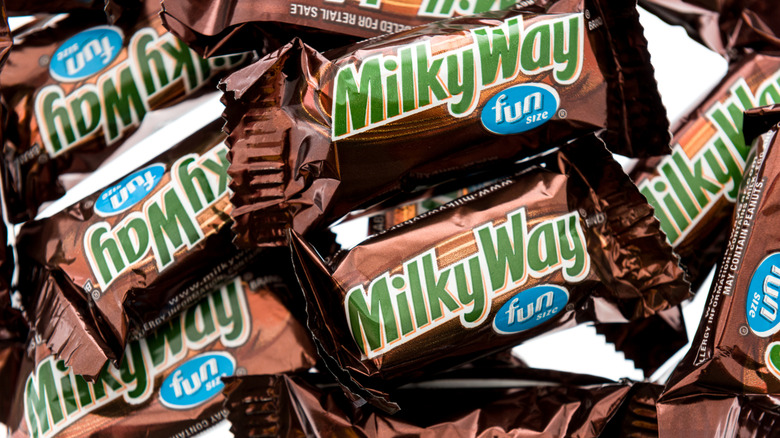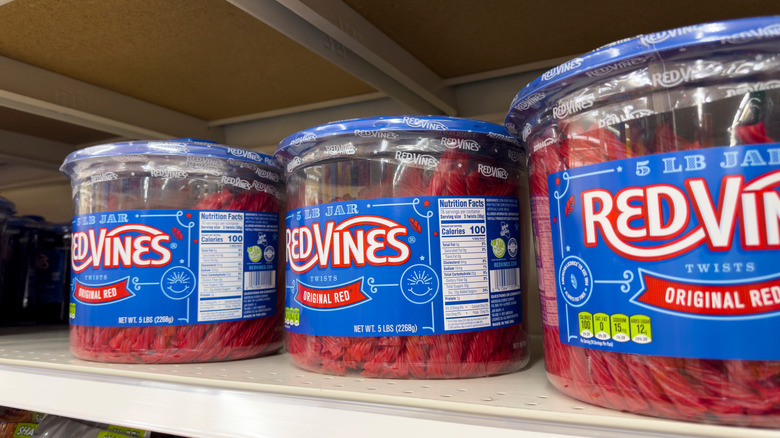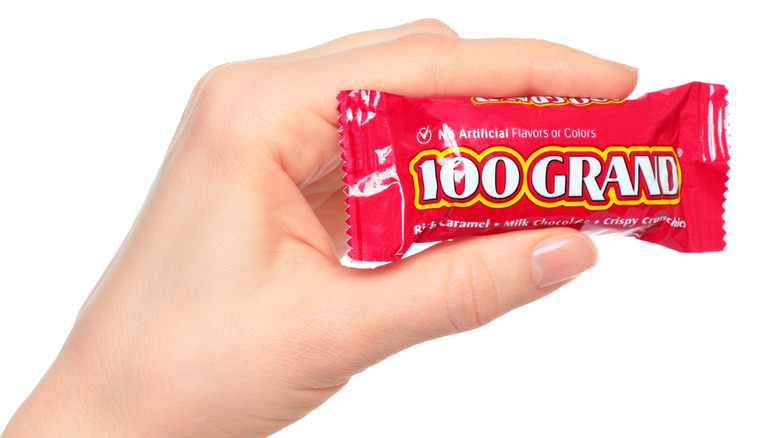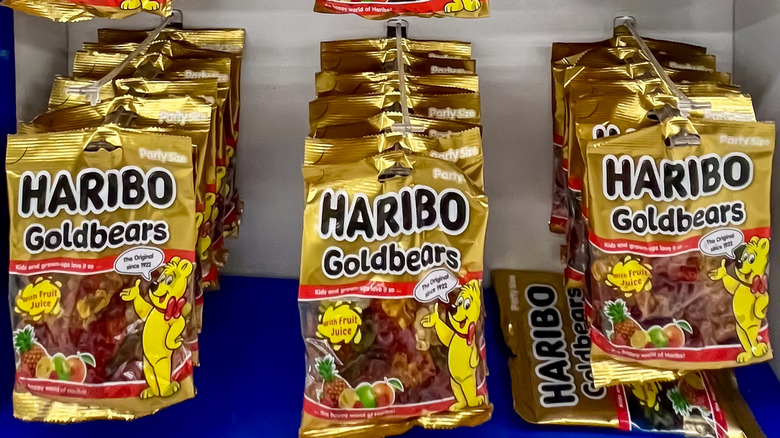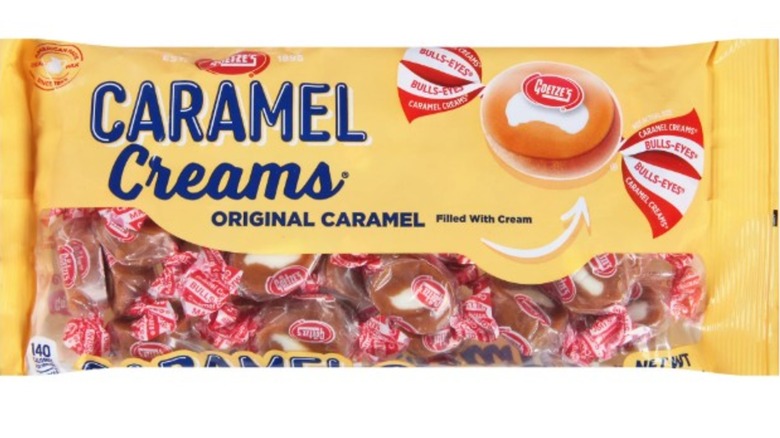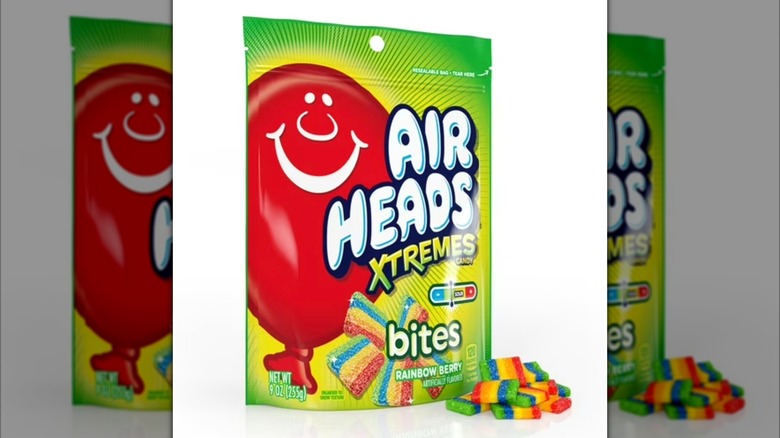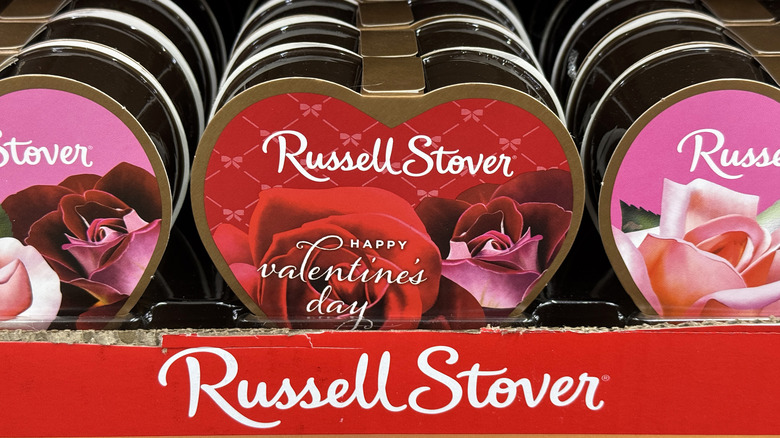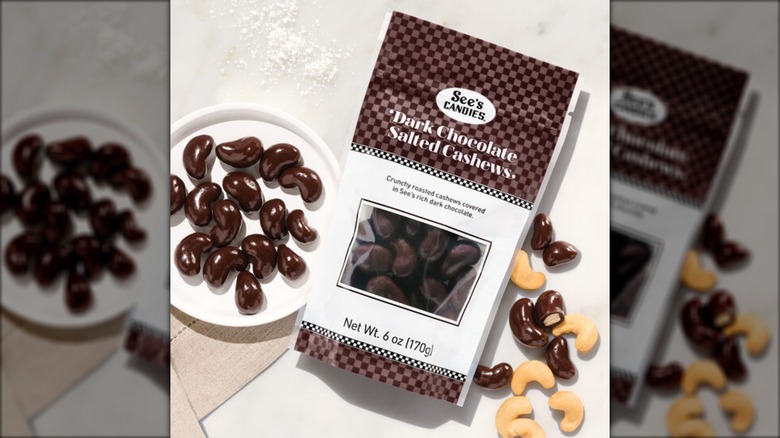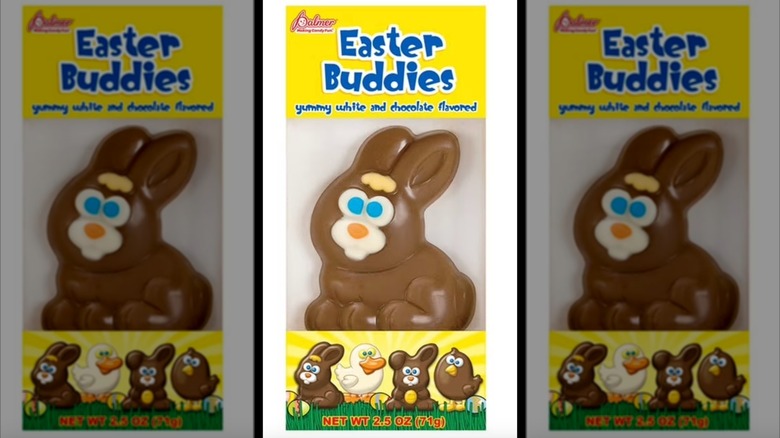15 Popular Candies That Surprisingly Aren't Gluten-Free
We may receive a commission on purchases made from links.
If you follow a gluten-free diet, whether due to personal preferences, an allergy, or a medical condition like celiac disease, then you're well-versed in the challenges that come along with this lifestyle. From being cautious to avoid making a mistake with gluten-free dining to ensuring you are not tricked by foods that you think should be gluten-free, but actually aren't, you always have to be on your toes. You have to check (and re-check) ingredient labels, food production practices, and the risk of cross-contamination.
Everyone wants to be able to indulge in some candy from time to time. But, this too can be challenging when you can only eat gluten-free items. While some candies are labeled gluten-free, letting you know that they are safe, not all manufacturers add such labels to their products. This can leave you trying to make your best guess, which isn't always easy. And, if you have celiac disease or a wheat allergy, you could become seriously ill if you don't guess correctly. Ahead, we've rounded up a list of some candies that surprisingly are not gluten-free. Steer clear of these and opt for safer alternatives if you cannot have wheat, barley, or rye.
Baby Ruth
If you were to go based on the ingredient label alone on a Baby Ruth bar, we wouldn't fault you for assuming it was gluten-free and safe for anyone steering clear of wheat, barley, or rye. While relatively long (more than 15 items), the ingredient list is free of anything that should contain gluten. Even the allergen warning only lists milk, peanuts, and soy. If you haven't had a Baby Ruth bar (or it's been a while), they consist of a nougat center, caramel, dry-roasted peanuts, and then the whole thing is covered in chocolate. Again, nothing that inherently screams, "Don't eat me! I'm full of gluten!"
So, why aren't Baby Ruth bars considered gluten-free? On the FAQ page for the candy bar, under the question about whether the products are gluten-free, you'll find a one-word answer: "No." No more information is provided about why those who have wheat allergies, celiac disease, or are otherwise gluten intolerant should not consume the bars. However, based on the lack of red flags in the ingredient list, one might assume that there is too much risk of cross-contamination during the production process.
Crunch
In theory, a Crunch bar should be gluten-free. The combination of milk chocolate and crisped rice could easily be made without any wheat, barley, or rye. But sadly, that isn't the case with Crunch because the ingredient list on the bar includes barley malt. Two words that those with celiac disease or other gluten sensitivities dread reading.
The barley malt alone should be enough to convince anyone following a gluten-free diet to opt for another treat to satisfy their desire for some crispy chocolate. However, if you're looking for yet another reason to stay away from Crunch, keep reading past the end of the ingredient list on the label. Next to the allergen statement, it also states that the bars may contain wheat. Peanuts and nuts are also listed as allergens that may be found in the bar, so it doesn't appear that the manufacturer uses dedicated facilities when producing this candy. Looks like you'll need to stick to making your own chocolate crunchy bars at home.
Twizzlers
If you enjoyed Twizzlers before making the shift to a gluten-free lifestyle, you might think that they should be safe to continue enjoying. There's nothing crispy or crunchy in these long ropes of red licorice. However, while you can find some gluten-free licorice candies, flour is needed to create the base. As you can probably guess, many companies keep their costs down by using wheat flour. This is, sadly, the case when it comes to Twizzlers. The package clearly lists wheat flour as one of the main ingredients.
If you're looking for a licorice fix, then you'll need to seek out a brand that opts to use rice flour or another gluten-free alternative to wheat flour. A few of the brands you might want to look for include YumEarth, Gimbal's, and Lakritsfabriken.
Fun-size Hershey's milk chocolate bars
If you've been gluten-free for a while, then you might already know that Hershey's is good about labeling its products that are safe. On the back of such candies, somewhere near the ingredient list, there is a small box with the words "gluten free" written inside it. This is a nice feature, as many other candy brands don't label products that they claim are gluten-free (we're looking at you, M&M's). Full-size Hershey's chocolate bars are one product that you'll find this gluten-free label on, but the fun-size bars are not free from gluten.
They also do not show up on the list of gluten-free products on Hershey's website. The simple answer comes back to two words that all with celiac disease or serious allergies dread: cross-contamination. As mentioned, Hershey's is good at labeling its safe products. The missing label on the fun-size bars indicates that they are not safe, likely because they don't have a dedicated production line like their full-size counterparts. So, go big or go home when it comes to Hershey's bars to stay gluten-free.
Seasonal Reese's
Full-size Hershey's bars aren't the only reliably gluten-free candy sold by the brand. Many varieties of Reese's also carry the gluten-free label, including the various sizes of the classic peanut butter cups, Reese's Pieces, Reese's Fast Break bars, and even the Pretzels Big Cup.
Because so many Reese's candy varieties are gluten-free, one might assume that they are all safe. However, this is unfortunately not the case when it comes to seasonal Reese's shapes. Think about those special eggs, Christmas trees, pumpkins, and other fun shapes that are released around major holidays. Unfortunately, if you have allergies or a major sensitivity to gluten, you will have to skip the fun and opt for a different Reese's product instead. The seasonal shapes are not labeled gluten-free. With Hershey's policy about labeling things that are safe, this should be enough to make one stay away from those cute peanut butter-filled pumpkins or Christmas trees.
SweeTarts Ropes
While they are not labeled as gluten-free, the original SweeTarts contain no questionable ingredients. Many people with sensitivities or allergies consider them safe to eat. If you're one of these people who like to munch on the tangy, yet sweet, crunchy candies, then you might think other varieties under this label are also safe. Specifically, you might want to add one of the SweetTarts Cherry Punch Ropes to your cart the next time you're at the grocery store.
Based on the fruity "rope" exterior and creamier interior, these might not look like they have any gluten, but that simply isn't the case. Take a second to flip the package over and read the ingredient list, and it's clear why it's a mistake to snack on these. Wheat flour is listed as the third ingredient, so these are a big no-no for anyone who needs to stay away from gluten.
Milky Way
Milky Way bars are another candy that many with gluten sensitivities might assume are safe based on how they look and taste. These candy bars offer a delicious mix of caramel, nougat, and milk chocolate. Without any "crispy" ingredients or an obvious need for flour, it's easy to see why one might think that they are gluten-free. If you only do a quick check of the nutritional label and look at the allergy statement, you still might assume that they are safe. The only allergens that are listed are milk, egg, and soy, while peanuts are listed under the "may contain" statement.
However, if you have celiac disease or gluten sensitivities, then you know that all forms of gluten are not recognized under the top eight allergens. Only wheat makes this cut, while neither barley nor rye has to be called out on nutritional labels. This is why it is imperative to read the full ingredient list when assessing product safety. When you do so, you will see that the Milky Way bar has barley malt extract as one of the ingredients used. Sorry, these aren't gluten-free either.
Red Vines
There are some key differences between Red Vines and Twizzlers. While Twizzlers have a fruity strawberry flavor, Red Vines offer a unique raspberry flavor. The two licorice-like candies also feature a slightly different shape, with Red Vines being shaped like a tube with a hollow center and Twizzlers being flatter with a much narrower inner hole. Those without celiac disease or other gluten issues could conduct a lengthy debate over which red licorice is better. However, anyone avoiding gluten should excuse themselves from such discussions, as Red Vines are also not safe for them to consume.
Like Twizzlers, the ingredient list also includes wheat flour. The American Licorice Company, which makes Red Vines, says that the wheat flour is used to form the licorice base. If you somehow need a more definitive answer regarding whether these are gluten-free, the FAQ page about Red Vines specifically says that the candies are not gluten-free because of that pesky wheat flour.
100 Grand
In 2018, Ferrero Group acquired 100 Grand bars, along with the rest of Nestlé's U.S. line of confectionery businesses. However, this acquisition didn't change the ingredients or manufacturing process of the bar in any way to make it safe for those staying away from gluten. This may come as a surprise when you think about what a 100 Grand is made from. The decadent treats contain a mix of crispy rice, peanuts, and caramel that are covered with milk chocolate — nothing that is obviously gluten. The allergen statement also doesn't list wheat as an ingredient or even as something the bar may contain.
However, 100 Grand bars are not gluten-free. The inclusion of barley malt in the ingredient lists is once again the culprit. While not a top eight allergen, barley is most definitely unsafe for anyone who needs to stay away from gluten.
Haribo Goldbears
There are many gluten-free brands of gummy bears. If you're no stranger to gluten-free eating, you may have tried some of these brands, which are labeled as gluten-free by the manufacturer – Albanese, YumEarth, and Lily's, to name a few. However, after hearing that some believe that the best gummy bears out there come from Haribo, you might want to give them a try to see what the fuss is all about. But you shouldn't do this if you cannot have gluten.
While the ingredient list for Haribo Goldbears does not include any gluten-containing ingredients, the manufacturer states that they might not be safe to consume. It says that there is a possibility of cross-contamination during the production process. This means that the Goldbears (and other Haribo products) could contain traces of gluten.
Goetze's Caramel Creams
Goetze's Caramel Creams are one of those candies that are much older than you might guess; it has been around for more than a century since being released in 1918. However, while there have been some modifications to the family recipe over time — such as getting rid of the partially hydrogenated oil it once used — one key component has not changed: the wheat flour.
While you might not expect to find wheat flour in a caramel candy, it is actually something that the manufacturer highlights as a crucial part of the recipe. The wheat flour gives them the classic texture that is chewier, instead of overly sticky. So, unless and until Goetze's decides to modify the recipe or release a gluten-free version made with rice flour or another safe alternative, those who avoid wheat should not eat these.
Airheads Xtremes Bites
If you've recently gone gluten-free and you're looking for which of your old favorite candies you can still enjoy, you can add Airheads Bars to the list. There are no gluten-containing ingredients listed on the package, and the manufacturer even states that it tests for gluten to confirm that these remain under the allowable 20 parts per million regulated by the FDA.
However, AirHeads Bars are the only product that the manufacturer tests, so trying Airhead Bites, Gummies, or Pops can be a risk, even though no gluten is listed in the ingredients. Taking a gamble with the Airheads Xtremes Bites, on the other hand, will be a losing bet. The manufacturer explicitly states that this recipe contains wheat and, therefore, is not gluten-free. While this may be surprising given that the original Airheads Bars are gluten-free, you won't want to make the mistake of adding the Xtremes Bites to your shopping cart.
Russell Stover milk chocolate
If you're craving chocolate and come across a box of Russell Stover milk chocolates at your local grocery store, you might wonder whether they'd be safe for you to enjoy if you're avoiding gluten. Unless you're reaching for something like the Whitman's Classic S'mores that very obviously have gluten in them, what could be the harm? If you read through the ingredients label for one of the Russell Stover milk chocolate products, you also won't see any mention of wheat, barley, or rye. So, you should be good to go, right? Not so fast!
While Russell Stover states that the majority of its products are made without the use of any gluten-containing ingredients, it also says that it makes no claims that any products are actually gluten-free. The products that do not have gluten in them are made on shared equipment, rendering them unsafe for those with celiac, wheat allergies, or other sensitivities. If you look beyond the ingredient list itself on a box of Russell Stover's milk chocolates, you should notice wheat listed under the "may contain" allergen statement.
See's Candies dark chocolate salted cashews
While several candy brands are not considered safe for those avoiding gluten, See's Candies does offer many safe options. The company states that all of the candy that is made in facilities owned and operated by See's Candies does not contain gluten. Knowing this, you might start browsing the company's website, come across the dark chocolate salted cashews, and add them to your cart.
However, these are one of the few things sold by See's Candies that are not gluten-free. While most of the company's candies are made in its own facilities, a few are made by other manufacturers. See's Candies calls out the chocolate covered cashews specifically as either containing or possibly containing wheat or gluten. So, while See's Candies might make one of the best store-bought boxed chocolates for those who cannot have gluten, it would be wise to stay away from the chocolate-covered cashews.
Palmer Easter Buddies
When you think about the sweet treats that should be in every Easter basket, one that you surely won't want to skip is a chocolate bunny. However, if you're looking to avoid gluten, you will want to walk past those popular Palmer Easter Buddies. While Palmer states that none of its recipes contain any gluten ingredients, it also notes that its products (every single one of them) are made on shared machinery that processes gluten.
Don't worry, though. You don't have to ruin Easter for the kiddos (or yourself; who are we to judge?) There are a few brands that do make safe, gluten-free chocolate bunnies. As mentioned above, a lot of See's Candies products, including its chocolate bunnies, are gluten-free. No Whey Chocolate is another company that makes gluten-free chocolate bunnies for the holiday.
